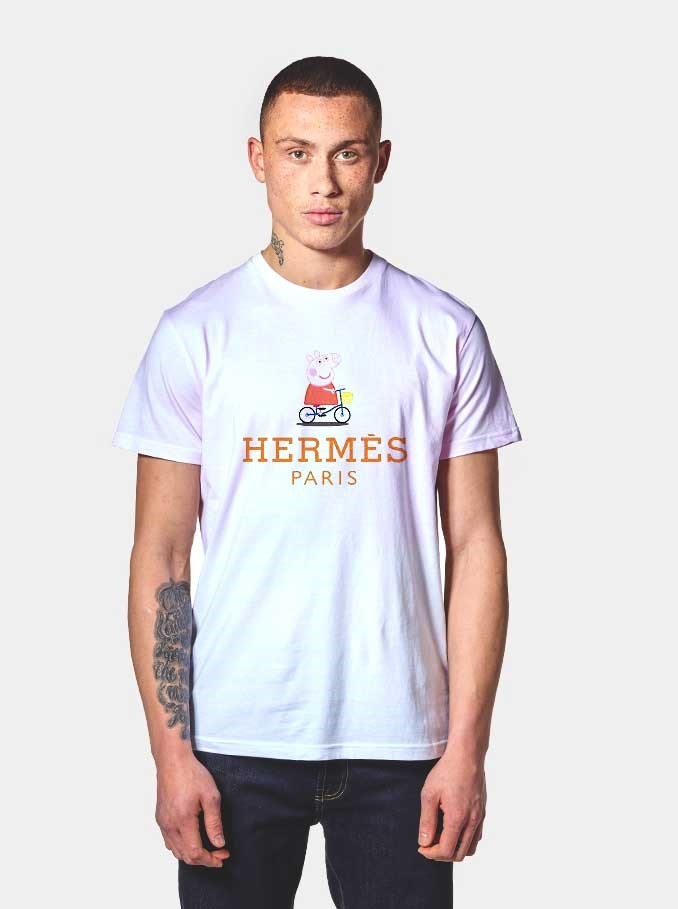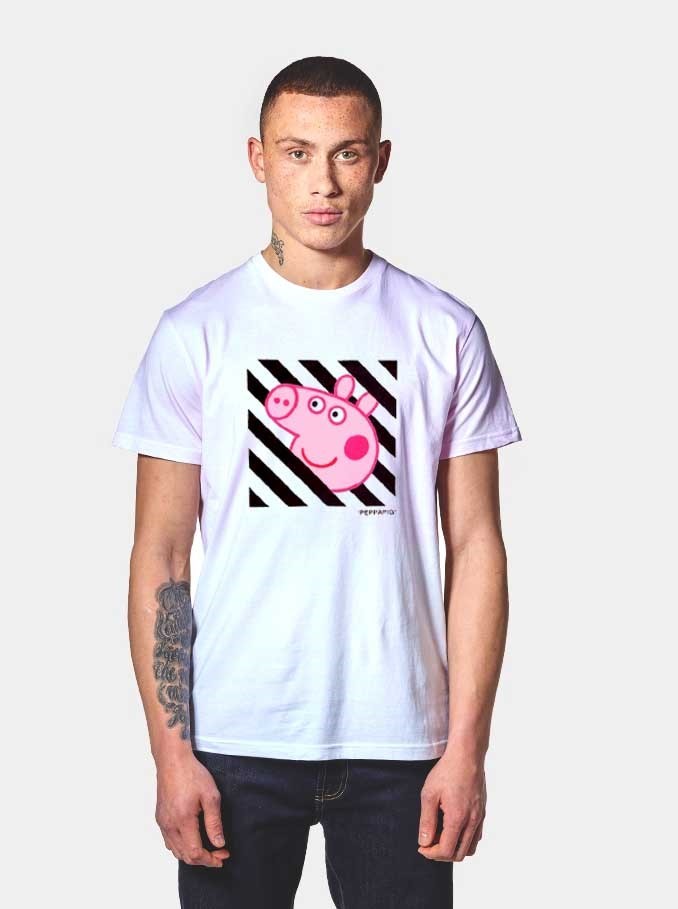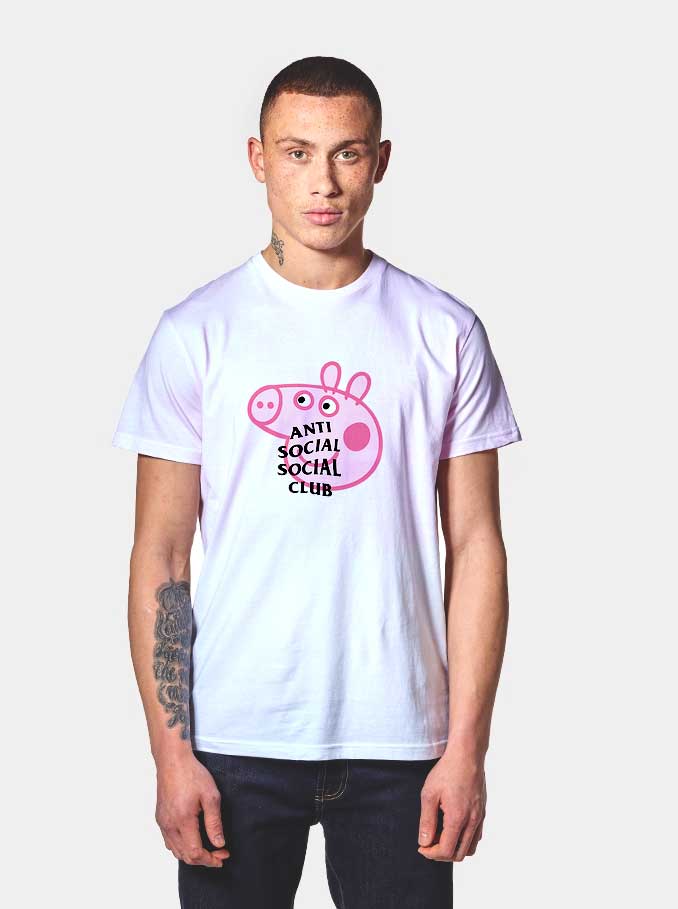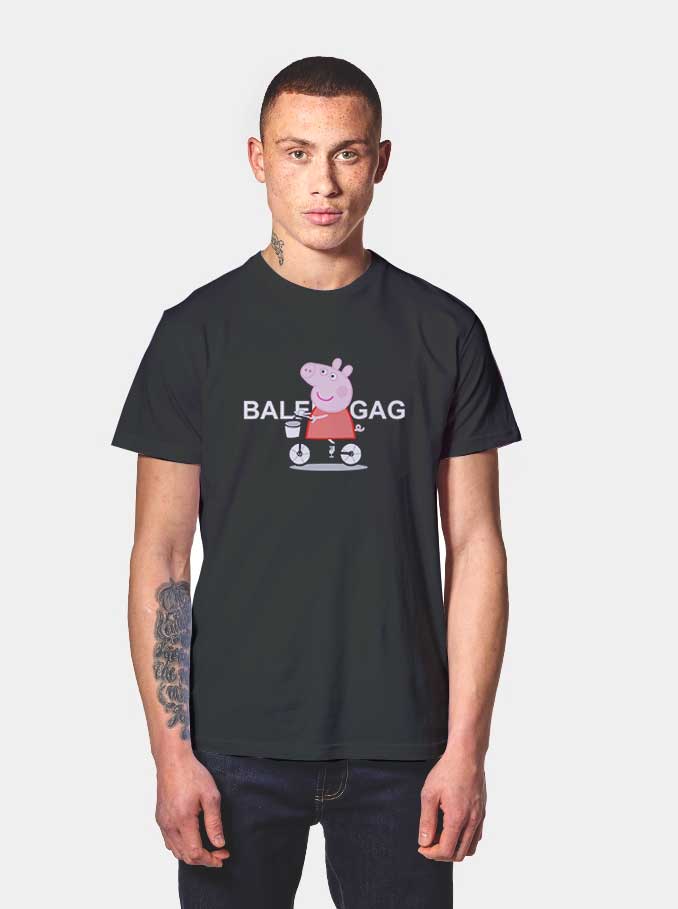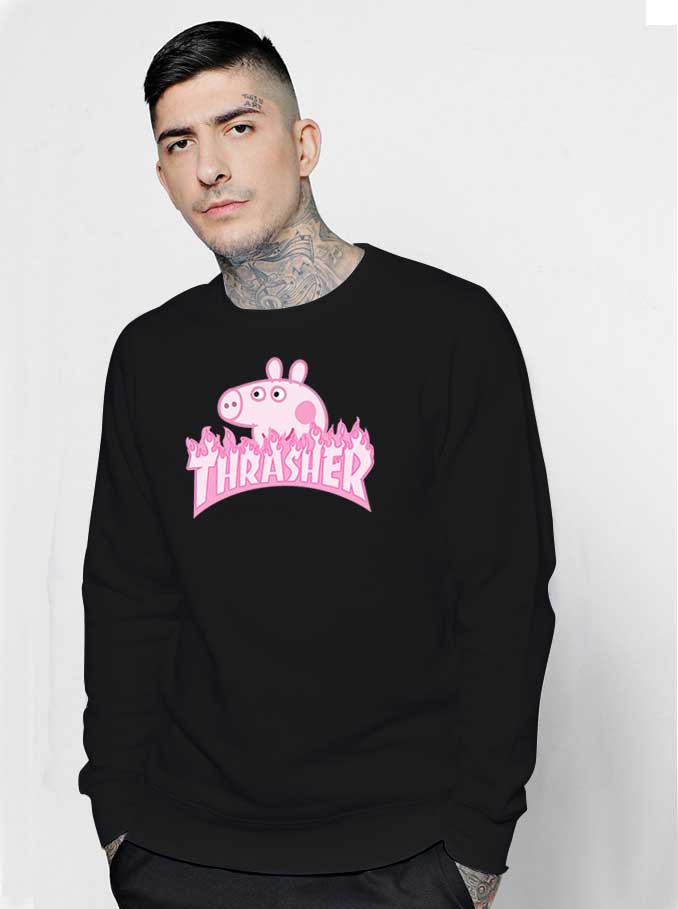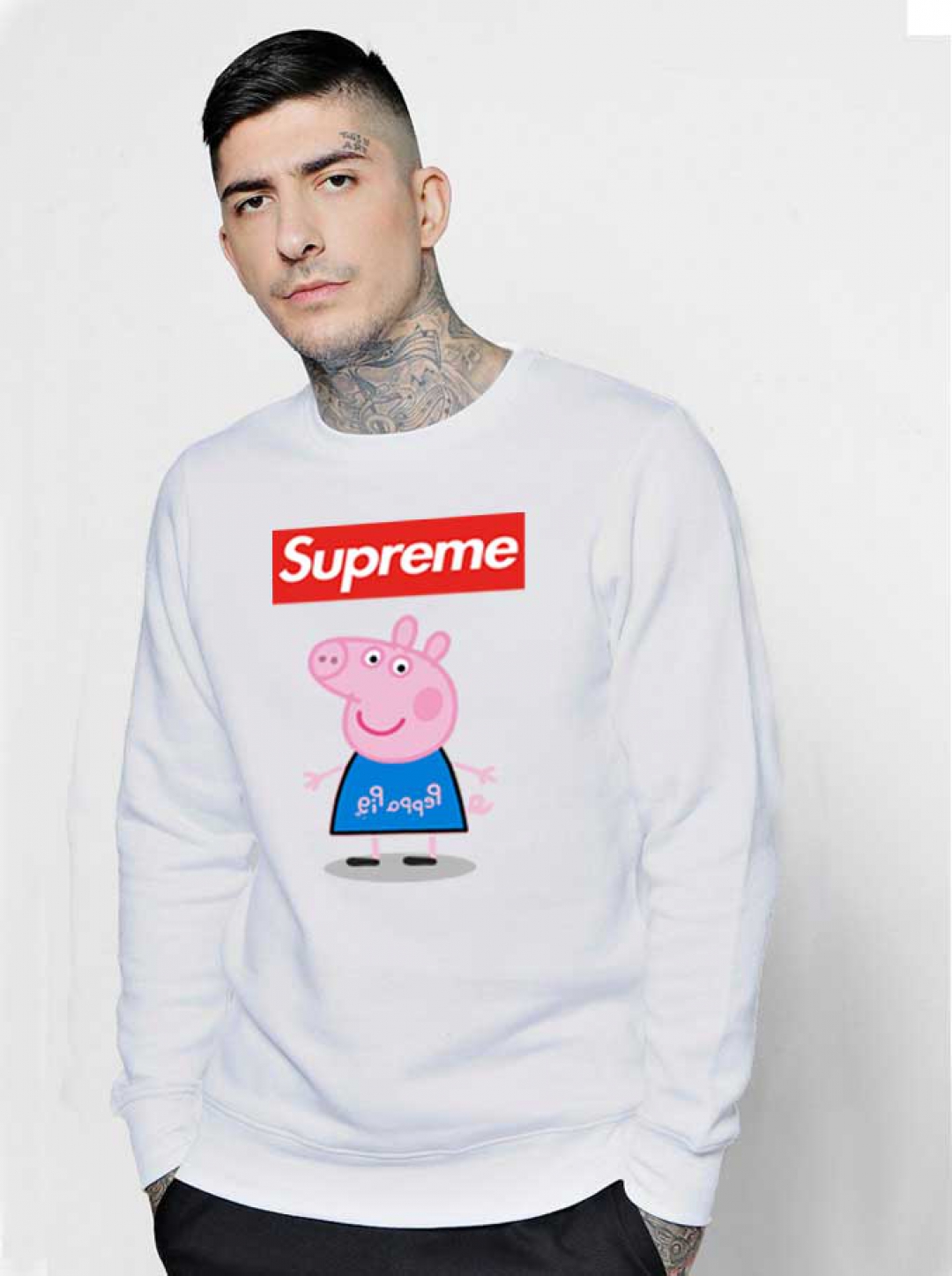Is Peppa Pig China's Newest Streetwear Icon?
The new face of Chinese streetwear loves muddy puddles and her family! She might not know how to whistle, but she sure holds her own in the hypebeast game. You heard me right, Peppa Pig became China’s surprise streetwear superstar this past summer and the circumstances regarding her sudden rise to fame are truly perplexing. Read on to hear about how Peppa Pig went from a children’s cartoon character to the face of a fashion rebellion.
Image via
For those of you who aren’t familiar with her majesty, Peppa Pig, she’s the star of an English children’s cartoon where she and her family explore what it means to grow up through everyday life experiences. She’s been known to throw quite a bit of shade at her friends, but for the most part, this cheeky little piglet means well.
Her rosy cheeks, red dress and whistle shaped head, though innocent and innocuous looking, have suddenly begun to pop up in bootleg brand collaborations with Off-White, Gucci, Balenciaga and Supreme, and the big question is… why?
Image via
Peppa Pig first began to air in China in 2015, where the show received incredible reception for its child-like appeal and translation into many different Chinese dialects. However, not too long after her initial airing, Peppa found herself in the hands of China’s Shehuiren subculture. The Shehuiren or "Society People” are a community of primarily working class youths who frequent the Chinese video-sharing site: Kuaishou. Peppa Pig has an incredible magnetism with the Shehuiren as she (apparently) represents the ideal “gangster” lifestyle: her multiple cars and four-story house make her a prime mascot for the bourgeoisie. This ideology, combined with her cheap and easily accessible merchandise, inspired Shehuiren kids to run out and pick up Peppa Pig bags, shirts and of course, the ever popular Peppa Pig Candy Dispensing Watch.
Fast forward a couple of months, and Peppa Pig’s celebrity became too much for the Chinese streaming service, Douyin, and over 30,000 clips of her show were forcibly removed from the site, as footage from her show was subverted to seem more “gangster” by rambunctious teenagers… I guess she was too much of a savage for the people to handle. After her fall from the mainstream, Peppa Pig took a dive into the streets.
Peppa Pig’s face began to pop up on t-shirts, spliced with designer labels. From crossing into the Chanel C’s to altering Balenciaga’s Logo to spell out Balencipeppa. Cross body bags with her little whistle-shaped head were worn by Kpop Stars, and her candy dispensing watches adorned the wrists of movie and tv show stars alike. For whatever reason, everyone wanted a piece of Peppa, and if merchandise wasn’t enough, there were people tattooing her face onto their backs and shaving her head into their hair.
Images via.
But really, why Peppa? We know already that China has an interesting history with the interdiction of cartoon characters (in 2017, Winnie the Pooh was banned as his image was used to mock Chinese authority). Perhaps it’s that Peppa Pig represents a political ambiguity that can easily be appropriated to fit the messages of so many different groups of people. Her apparent bourgeois lifestyle may resonate well with a generation of wealthy children running rampant in Shanghai, while her accessibility to the working class makes her face a fitting image for critiquing more superficial ways of life.
The power of Peppa Pig is her unlimited interpretation; she can be spun in so many different ways to convey so many different messages without being directly involved within the mainstream. The juxtaposition of her image with designer labels couldn’t be more appropriate in conveying both ironic social commentary and the signification for a wealthy lifestyle. The rise of this little cartoon pig in the underground fashion scene just shows how powerful subversion in fashion can be. Any image can be taken and used to convey something completely contrary to its original intention. Peppa Pig’s rise to celebrity demonstrates just that, truly sustaining her rightful position as the Pig for the People.
Image via.
Featured gif via.





